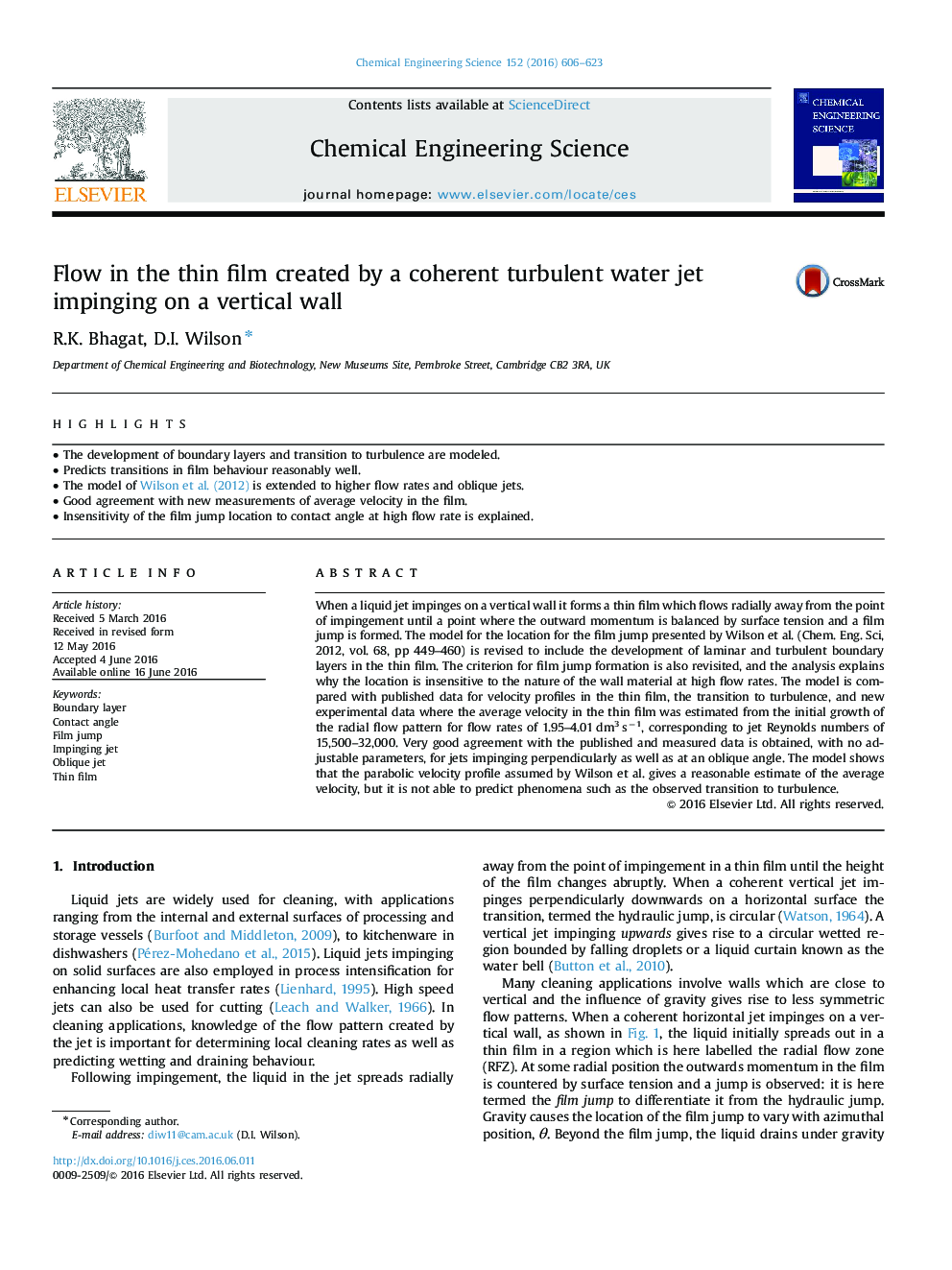| Article ID | Journal | Published Year | Pages | File Type |
|---|---|---|---|---|
| 6589097 | Chemical Engineering Science | 2016 | 18 Pages |
Abstract
When a liquid jet impinges on a vertical wall it forms a thin film which flows radially away from the point of impingement until a point where the outward momentum is balanced by surface tension and a film jump is formed. The model for the location for the film jump presented by Wilson et al. (Chem. Eng. Sci, 2012, vol. 68, pp 449-460) is revised to include the development of laminar and turbulent boundary layers in the thin film. The criterion for film jump formation is also revisited, and the analysis explains why the location is insensitive to the nature of the wall material at high flow rates. The model is compared with published data for velocity profiles in the thin film, the transition to turbulence, and new experimental data where the average velocity in the thin film was estimated from the initial growth of the radial flow pattern for flow rates of 1.95-4.01Â dm3Â sâ1, corresponding to jet Reynolds numbers of 15,500-32,000. Very good agreement with the published and measured data is obtained, with no adjustable parameters, for jets impinging perpendicularly as well as at an oblique angle. The model shows that the parabolic velocity profile assumed by Wilson et al. gives a reasonable estimate of the average velocity, but it is not able to predict phenomena such as the observed transition to turbulence.
Related Topics
Physical Sciences and Engineering
Chemical Engineering
Chemical Engineering (General)
Authors
R.K. Bhagat, D.I. Wilson,
